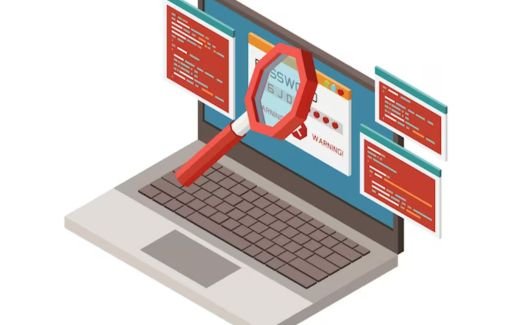


With the internet full of dangerous links and websites designed to infect devices with malware, it's important to be cautious and verify link safety before clicking.
Thankfully, there are various free online tools and best practices that can help you scan links and check for viruses or other threats before potentially compromising your device or data.
One of the best ways to check a link for malware is to use a URL scanning tool. URL scanners analyze links to look for signals that may indicate the site contains viruses, phishing attempts, spam, or other malicious content:
VirusTotal is one of the most well-known free online virus scanners. Simply paste in a link you want to check, and VirusTotal will scan it through multiple antivirus engines and websites to provide an overall safety assessment. The results will show if any issues were detected.
URLVoid offers free URL scans powered by Web of Trust, Google Safe Browsing, PhishTank, and more. It will categorize links as either safe, suspicious, or malicious based on over a dozen different threat intelligence sources.
PhishTank lets you check specifically for phishing attempts and known phishing pages. It maintains a constantly updated database of reported phishing sites.
While not as full-featured as other scanners, Google Safe Browsing is a quick way to check a link against Google's lists of unsafe sites. It can identify malicious pages or downloads.
In addition to scanning direct links, you can also use website malware scanners to check entire domains or web pages for threats:
SiteSafety by Avast lets you enter a website URL to scan the overall reputation and prevalence of threats detected on the domain. It checks hosting information, downloads, and links to paint a full picture.
Quttera scans websites using both its contextual detection engine and Google Safe Browsing data. Results include recent malware discoveries, suspicious codes, fraudulent links, and other identified issues.
The Sucuri SiteCheck scanner provides free website malware scans, looking for injected scripts, iframe redirects, blacklisting status, website errors, and other signs of compromise.
Norton Safe Web analyzes website reputation based on a variety of factors, including the presence of threats, spam, scam indicators, and inappropriate content. It provides credible safety ratings.

There are also various browser extensions and online tools you can use to get quick link scans right from your browser toolbar:
In addition to using online scanning tools, following some basic best practices can help you evaluate link safety:
Checking links for malware before clicking can seem tedious, but it helps keep your devices free of viruses and your sensitive information out of the hands of cybercriminals.
Using online scanning tools and following safe browsing habits can give you peace of mind that the links you click lead to legitimate sites, not malicious ones trying to infect your device.
A: To evaluate whether a link is safe before clicking, run it through an online scanner like VirusTotal or URLVoid to check for reported threats. Also, inspect the URL for odd characters, and verify the source and landing page seem legitimate. When in doubt, don't click links if they seem suspicious.
A: Tools like PhishTank, Google Safe Browsing, and browser extensions like Web of Trust can analyze links specifically for signs of phishing scams or known malware sites. Look for red flags like odd URLs, sketchy sources, and strange landing pages.
A: You can scan entire domains and websites using tools like SiteSafety, Quttera, Sucuri SiteCheck and Norton Safe Web. They will assess factors like hosting reputation, malicious scripts, blacklisting status, and other indicators that a site may be compromised by malware or hackers.
A: If your antivirus or web browser blocks access to a link, it likely identified something malicious associated with the site. This could be an infected file, a known phishing scam, or another threat that sets off warning bells based on constantly updated threat databases. Best to steer clear of any site your security tools flag.
A: Unfortunately shortened links can obscure the ultimate destination site. Use a tool like Unshorten. it to reveal the full original link before scanning it with other tools. You can also paste the shortened link in your browser but don't visit the site to see if the preview shows any red flags.
A: If you accidentally visit a suspicious link, run a full system anti-malware scan using updated, reputable security software like MalwareBytes, Norton, or BitDefender. Also, check for strange behaviour like popups or sluggish performance that could indicate malware. Reset all passwords as a precaution if the link is questionable.
A: Yes, browser extensions like Web of Trust, Bitdefender TrafficLight, and Trend Micro Check will annotate search results and links with visual icons to quickly indicate potential threats before you click. They serve as constant second opinions on link reputation as you browse.
A: Never click direct links in emails unless you can verify without a doubt the sender is legitimate. Even then, copy and paste the link into an online scanner instead of clicking. Email links are commonly used for phishing and malware distribution so assess with extreme caution by checking the URL, source, landing page, and running scans.
Staying vigilant against malicious links is crucial for protecting yourself online. Take time to carefully scan any questionable links before clicking using URL scanners, website malware checkers, browser extensions, and other tools.
Validating safety doesn't take long, but it could save you from compromised accounts, identity theft, device infections, and other headaches if a link does turn out to be malicious. Practicing good link hygiene improves your overall web security.